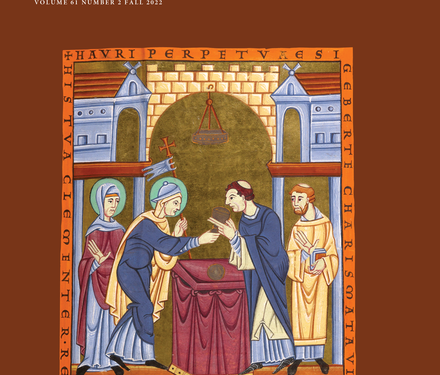Gatti publishes article on the significance of three portraits depicting the German Bishop Sigebert of Minden (1022-1036) in Gesta: The Journal for the International Center for Medieval Art.
Professor of Art History Evan Gatti’s recent publication, “Seeing through Sigebert: A Re-Examination of the Liturgical Portraits of Sigebert of Minden (1022–36),” appears in the latest edition of Gesta, a journal sponsored by the International Center of Medieval Art. Gesta, one of the most prominent English-language journals focused on medieval art, publishes original research on all facets of artistic production from circa 300 to circa 1500 C.E. in every corner of the medieval world.
Gatti’s article focuses on three extraordinary portraits of Bishop Sigebert of Minden (1022–36) that appear in a set of nine liturgical manuscripts, or books, he had commissioned. Inspired by the unusual presentation of Sigebert’s portraits in an exhibition, Gatti argues that the portraits were more than repetitive, honorific re-presentations of a specific historical figure. Instead, the portraits should be seen as a series of thresholds through which Sigebert and his successors entered into the sacred space of the liturgy. Shaped by the development of liturgical iconographies of episcopal authority and heightened by changes in clerical education that emphasized the physical body as representative of inner virtue, the portraits exemplified the process of becoming a “good” bishop.
Gatti’s research shows how these images helped present and reinforce the relationship between Church and community, providing a lens for us to better understand how one of the most important political and religious forces functioned at that time.
Credit: Source link


